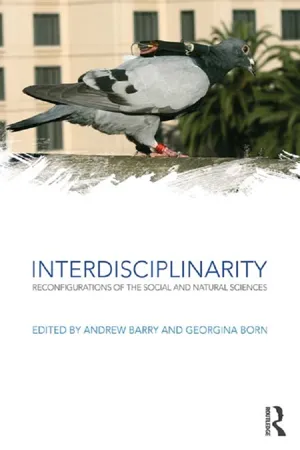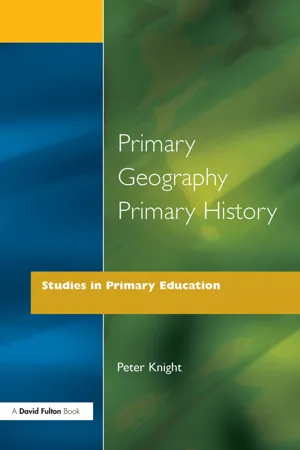Fusion Research
Fusion research involves the study of nuclear fusion as a potential source of energy. It focuses on replicating the process that powers the sun and stars to generate clean and abundant energy on Earth. Scientists and researchers are exploring various methods to achieve controlled fusion reactions, which could offer a sustainable and virtually limitless energy source for the future.
3 Key excerpts on "Fusion Research"
- eBook - ePub
Geofusion 2.0
The Power of Geography in the Economic and Geopolitical World Order
- Norbert Csizmadia, Bence Gáspár(Authors)
- 2021(Publication Date)
- PublishDrive(Publisher)
...By combining geography, geoeconomics, geopolitics, and the global economy, our complex world can be presented in an understandable fashion. One of the most pressing questions of the age of technology is what role places will play. Geofusion synthetizes various geographical factors in the age of networks. Technological progress once again underlines the importance of geography (Csizmadia, N. 2017). To understand our new, multipolar, geopolitical and economic world, geographical factors and the geofusion input factors can be used to determine the force fields and centers. This was confirmed through detailed analysis of the literature on the one hand, and through the geofusion methodology I devised on the other. A new functional geography is evolving, based on the term “connectography” (coined by Parag Khanna by merging the words “connectivity” and “geography”). Fusion geography, or geofusion, takes all of this into account. Geofusion, examines the spatial correlations among complex global phenomena. It is a theory and a methodology at the same time, a model that helps interpret the world of networks arranged into hubs by analyzing the relationship between the geographical, social, economic, and political developments at the hierarchical regional levels. It is also an essential tool for exploring the new global world order, assisting in making sense of the world globalized in networks using geofusion maps. It creates a synthesis of various network maps depicting the functional, geoeconomic relations arranged into hubs to show the intensity of the functional, aerial, land, water, and IT connectivity networks and their social and economic potential. Geofusion can be used to outline and explore the economic power centers and gateway regions of our world...
- eBook - ePub
Interdisciplinarity
Reconfigurations of the Social and Natural Sciences
- Andrew Barry, Georgina Born, Andrew Barry, Georgina Born(Authors)
- 2013(Publication Date)
- Routledge(Publisher)
...However, geography's identity as an interdiscipline that works across the division of social and natural sciences can be argued to be realised more effectively today in the co-habitation of ‘physical’ and ‘human’ geographers in shared buildings and curricula, 2 than in research practice. As the contents of disciplinary journals and the publication habits of those working in the two wings of the discipline attest, both are commonly more conversant with work in cognate disciplines through common fields of interest (such as urban studies or glaciology) than with each other's. In this, as historians of geography have argued, geographical practice has always been exercised through different sites, techniques and materials which have kept it a heterogeneous and contested enterprise (see Livingstone, 1992; Withers, 2009). Yet these features might be unremarkable – heterogeneity and contestation is surely characteristic of all disciplines – were it not for the weight attached in the geographical tradition to integrating natural and social worlds. Countervailing, and to some extent disguising, this divergent tendency has been the emergence in the later decades of the twentieth century of ‘the environment’ in general, and ‘climate change’ in particular, as archetypal imperatives for greater interdisciplinarity in the organisation and conduct of research. In the UK, for example, geography's institutional guardians such as the Royal Geographical Society and the Geographical Association have embraced this environmental bolster to its interdisciplinary claims and, thereby, its ‘relevance’ in terms of public policy agendas for science and education. University geography departments have been no less adept at repackaging themselves to suit the times, variously accentuating their ‘environmental/science’ credentials. 3 Any number of collaborations between human and physical geographers has been spawned in consequence to address designated ‘multi-factorial’ environmental problems...
- eBook - ePub
- Peter Knight(Author)
- 2013(Publication Date)
- Routledge(Publisher)
...Dominant positions may be identified, and he showed how the geographical hegemony defended itself against the fledgling environmental studies (Goodson, 1983). On this view it is naive to expect consensus of definition not just in geography but in any subject. The possibility remains, however, that geography’s identity crisis is especially acute. Its concern with place is distinctive but not unique, while its concern with the natural world is shared with science, as are some aspects of its concern with the way in which people interact with their surroundings, through farming (agriculture), construction (civil engineering) and pollution (chemistry). With religion, ethics, sociology, political science and history it shares a (moral) interest in human lifestyles. As one synthesis of these subjects geography can be regarded as an integrated study in its own right, as a cross-curricular subject. In summary, four points are worth emphasising. First, we should think not so much of geography as of geographies. We might then expect different views of the subject to lead to rather different educational emphases. Secondly, the view of geography as maps and facts is, on any reckoning, a narrow misrepresentation. Thirdly, geography does not look very much like a subject, in the sense that Hirst (1965) defined a subject, but it is a well-established and productive field of study. Fourthly, it follows that geography draws upon and integrates other subjects: the geographer is a multi-disciplinary person. As a boundary-breaking subject, and as a bridge between the natural sciences and the arts, geography has a distinctiveness...


